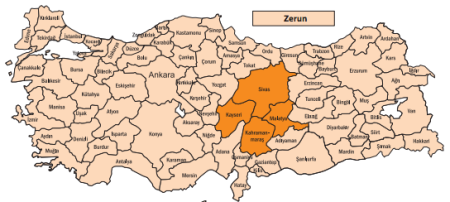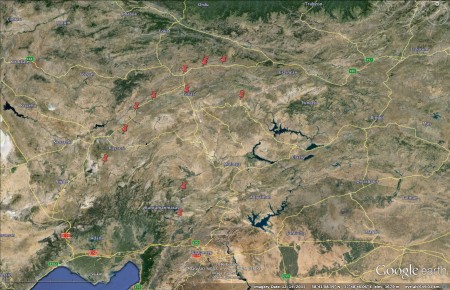- No, I don’t think the history of potatoes is at an end, but I know what they mean.
- The history of rubber in pics.
- The history of the wheat dwarfing gene.
- Svalbard makes history.
- Sicily goes back into its history for its daily bread.
- Another foothold in history for Gary Nabhan.
- History, shmistory, we need to look forward. Biohacking is the future of food. Say twelve year olds.
Nibbles: Solutions edition
- No new salinity tolerance in cereals? You need to look at the right thing.
- No new crops? Focus on plants’ sex lives.
- No hope for drylands? Look to biodiversity.
- No new agricultural land? No problem.
- No data on neglected Himalayan crops? Got you covered.
- No way you’re drinking coffee from civet droppings? Chemistry to the rescue.
- No place for the offspring of F1 hybrids in your agriculture? Go apomictic.
- No new fruits left to try? Hang in there.
- No diversity in your Aragonese homegarden? There’s a genebank for that.
- No impact for your agricultural research. Try clusters.
- No agroecological patterning to your crop’s genetic diversity? It’s the culture, stupid.
Brainfood: Animal genomics, Konjac diversity, New wild cassava, New wild cowpeas, Saline breeding, Land sparing, Sorghum diversity
- The impact of whole genome sequence data to prioritise animals for genetic diversity conservation. Relationships from whole genome sequence data were better than SNPs at preserving rare variants when selecting individuals for inclusion in a genebank.
- Genetic variation in wild populations of the tuber crop Amorphophallus konjac (Araceae) in central China as revealed by AFLP markers. Diverse, endangered, somewhat isolated populations, with some geographic structuring.
- Manihot allemii sp. nov. (Euphorbiaceae s.s.) with entire and unlobed leaves from northern Brazil, with notes about foliar anatomy. It never ends.
- Novel Genetic Resources in the Genus Vigna Unveiled from Gene Bank Accessions. Japan sorts out its genebank. It really does never end.
- Uncoupling of sodium and chloride to assist breeding for salinity tolerance in crops. We’ve been breeding for exclusion of Na+, but we should be breeding for tolerance to it.
- How can higher-yield farming help to spare nature? By making sure that lower prices and/or higher profits don’t encourage agricultural expansion.
- Seed exchange networks, ethnicity, and sorghum diversity. Culture drives diversity.
The status of wheat landraces in Tajikistan, Turkey and Uzbekistan
Six years in the making, FAO announced today the publication of surveys of wheat landraces in farmers’ fields in Tajikistan, Turkey and Uzbekistan. The work was done in collaboration with CIMMYT, ICARDA and national researchers. Although, perhaps surprisingly, dozens of landraces were still found — 162 distinct names in Turkey — they are certainly under threat:
Local landraces today account for less than 1 percent of total wheat production. Over the past 75 years, according to field surveys, the number of wheat landraces fell from 37 to 7 in Balikesir, a western province of Turkey.
Here’s the distribution of the landrace Zerun, according to the Turkey survey.
There are 14 accessions with this name listed in Genesys, and they do indeed come from the region in question, though mainly from close to roads (click to see better):
It was not clear to me from the report of the work in Turkey whether samples were taken for ex situ conservation, or at least genotypic comparison with existing accessions. But if this one landrace is anything to go by, there might still be scope for some gap-filling collecting.
Nibbles: Gastronomy edition
- Gastronomy comes to the Amazon.
- Maybe it should come to Tikal too.
- You know it’s already in Mexico.
- Not to mention Peru.
- Preparing decent coffee counts as gastronomy, I guess. But SL28 is not genetically engineered. Not in the usual sense, anyway.
- Not sure that eels have much of a future in gastronomy.
- Into Africa: Indian seeds. And Indian gastronomy along with them?
- Feralization is not domestication in reverse. Lots of gastronomic potential, though.
- Meanwhile…

